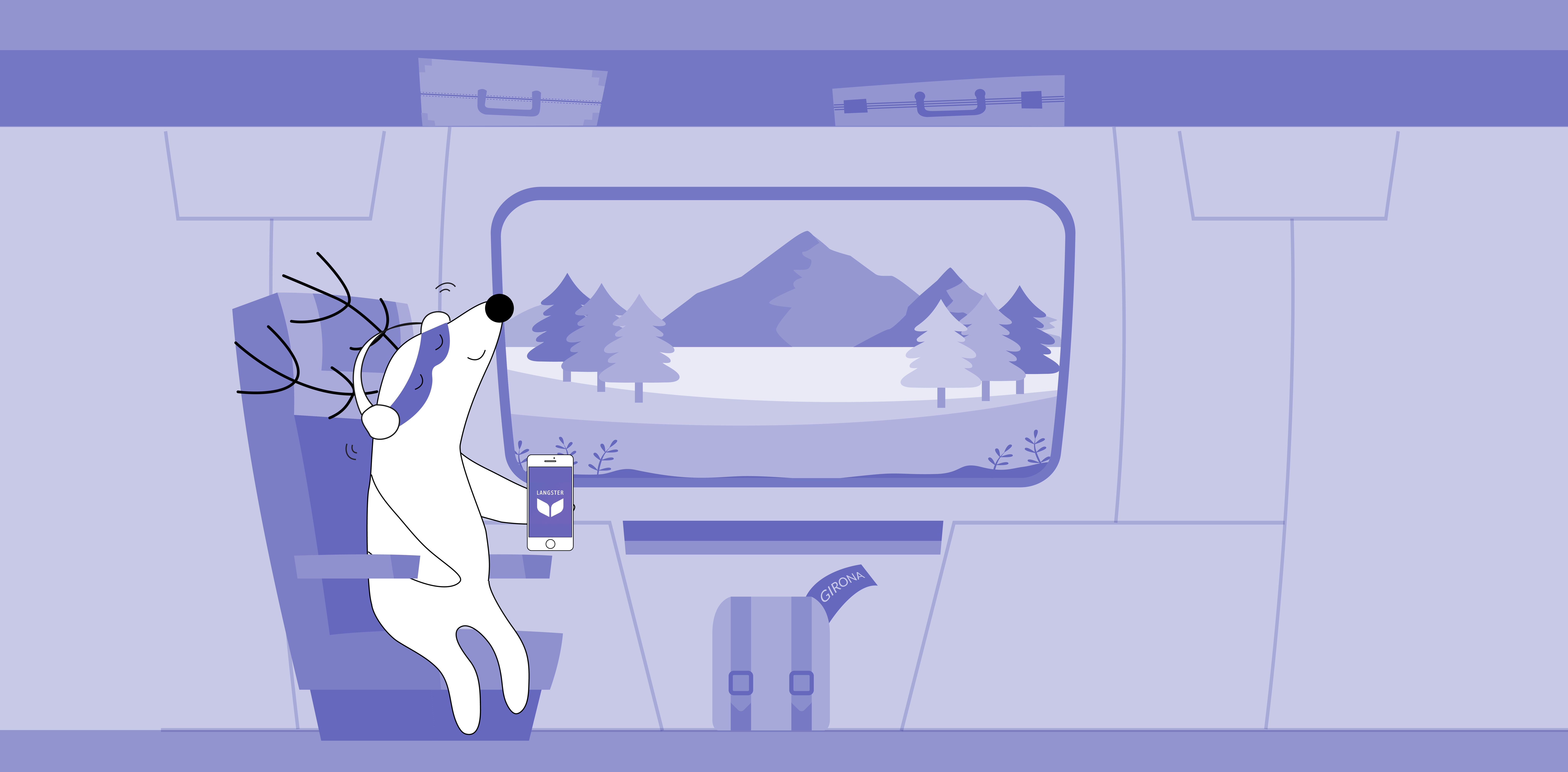
Learning any new language comes with its set of challenges and excitements, and Spanish is no different. One of the fundamental aspects of conversing in Spanish, or any language, revolves around family. Whether you're talking about yours, asking about someone else's, or simply trying to comprehend a story, knowing the vocabulary related to family members is essential.
In this blog post, we'll explore some of the most common words used to refer to family members in Spanish, including how to use them in context, their gender and number variations, and examples to solidify your understanding.
Learn Spanish with Langster
Abuela (Grandmother) & Abuelo (Grandfather)
Spanish
English
Abuelo.
Grandfather.
Abuela.
Grandmother.
The word abuela is the Spanish term for grandmother, embodying a figure of warmth, wisdom, and familial love in many Spanish-speaking cultures. The masculine counterpart, abuelo (grandfather), holds a similar place of respect and affection within the family.
Additionally, to refer to grandparents in plural, you use abuelos, regardless of whether the group includes one grandfather and one grandmother or multiple grandfathers and grandmothers.

Spanish
English
Mi abuela cocina las mejores empanadas.
My grandmother cooks the best empanadas.
Padres (Parents)
Spanish
English
Padres.
Parents.
The term padres refers to parents collectively in Spanish, encompassing both the father (padre) and the mother (madre). This noun is inherently plural and is used when speaking about one's parents as a unit rather than individually.
To specify one parent, you would use either padre for father or madre for mother. However, when talking about both together, padres is the appropriate term.
Spanish
English
Mis padres están celebrando su aniversario de matrimonio.
My parents are celebrating their marriage anniversary.
Hijos (Children)

Spanish
English
Hijos.
Children.
The term hijos refers to children in Spanish, encompassing both sons (hijos) and daughters (hijas) when used in its plural form.
Unlike English, where 'children' is gender-neutral, Spanish distinguishes between male and female offspring with hijos generally referring to children as a collective group or specifically to sons, and hijas used when referring exclusively to daughters.
Spanish
English
Los hijos de la Señora González y su familia son muy educados.
Mrs. Gonzalez’s children and their family are very polite.
Tío/Tía (Uncle/Aunt)
Spanish
English
Tío.
Uncle.
Tía.
Aunt.
The terms tío (uncle) and tía (aunt) refer to the siblings of one’s parents in Spanish. The plural forms are tíos for a mix of uncles and aunts or multiple of either and tías exclusively for aunts.
Spanish
English
La tía María viene a visitarnos este fin de semana.
Aunt Maria is coming to visit us this weekend.
Mi tío es profesor en la universidad local.
My uncle is a professor at the local university.
Primo/Prima (Cousin)
Spanish
English
Primo.
Cousin.
Prima.
Cousin.
The Spanish vocabulary primo (male cousin) and prima (female cousin) refer to the children of one's uncle or aunt in Spanish.
In Spanish, like other gender-specific nouns, the term changes with the gender of the individual – primo for males and prima for females. The plural forms also change, with primos used for a group of male cousins or both male and female cousins and primas for a group of female cousins.
Spanish
English
Mis primos vienen a la fiesta de cumpleaños.
My cousins are coming to the birthday party.
Mis primas vienen a visitarnos este fin de semana.
My cousins are coming to visit us this weekend.
Hermano/Hermana (Brother/Sister)
Spanish
English
Hermano.
Brother.
Hermana.
Sister.
The terms hermano for brother and hermana for sister denote an individual’s siblings. In Spanish-speaking cultures, brothers and sisters hold pivotal roles in family life, often characterized by deep bonds that offer mutual support, companionship, and learning opportunities throughout life.
Spanish
English
Mi hermano menor juega al fútbol.
My younger brother plays soccer.
Mi hermana es ingeniera en una empresa de tecnología.
My sister is an engineer at a technology company.
The plural forms — hermanos for a mixed-gender group or multiple brothers, and hermanas exclusively for sisters — emphasize the inclusive nature of the familial nucleus. As you can see, -os in the final syllable signals the neutral way to pluralize words in Spanish.
Nieto/Nieta (Grandson/Granddaughter)
Spanish
English
Nieto.
Grandson.
Nieta.
Granddaughter.
Nieto and nieta are Spanish terms for grandson and granddaughter, respectively. The plural forms, nietos for a group of grandchildren or multiple grandsons and nietas for multiple granddaughters, reflect the joy that comes with the expanding family tree.
Spanish
English
Mi nieto ama jugar videojuegos.
My grandson loves playing video games.
Mi nieta está aprendiendo a tocar el piano.
My granddaughter is learning to play the piano.
Bisabuelo/Bisabuela (Great-Grandfather/Great-Grandmother)
Spanish
English
Bisabuelo.
Great-grandfather.
Bisabuela.
Great-grandmother.
The terms bisabuelo for great-grandfather and bisabuela for great-grandmother connect individuals to a deeper family history and lineage, representing the richness of generational legacy.
Spanish culture places immense value on honoring ancestors, and great-grandparents are viewed as the elders who embody wisdom, history, and familial legacy.
Spanish
English
Mi bisabuela ya tiene tiene noventa años.
My great-grandmother is ninety years old already.
Mi bisabuelo nació en España.
My great-grandfather was born in Spain.
Family-in-Law Members

In addition to immediate and extended family, Spanish vocabulary also encompasses terms for family-in-law members (familia polìtica).
These relationships are equally important, often signifying the merging of two families through marriage or long-term partnerships.
Here are some of the key terms:
Spanish
English
Suegro.
Father in law.
Suegra.
Mother in law.
Cuñado.
Brother in law.
Cuñada.
Sister in law.
Yerno.
Son in law.
Nuera.
Daughter in law.
The Bottom Line

Exploring the depths of familial terms in Spanish not only enriches your vocabulary but also opens a gateway to understanding and appreciating the cultural significance of family in Spanish-speaking societies.
From the core family units to the extensive network of in-law relationships and beyond, each term carries with it a piece of tradition and emotional bond. We encourage you to practice these terms, immerse yourself in the culture, and engage with native speakers for a truly enriching learning experience.
Ready to take your Spanish to the next level and connect more deeply with the heart of its culture? Download Langster today, and start mastering these family-centric expressions and much more.
Learn Spanish with Langster









